The Language Corner
Multicultural Club
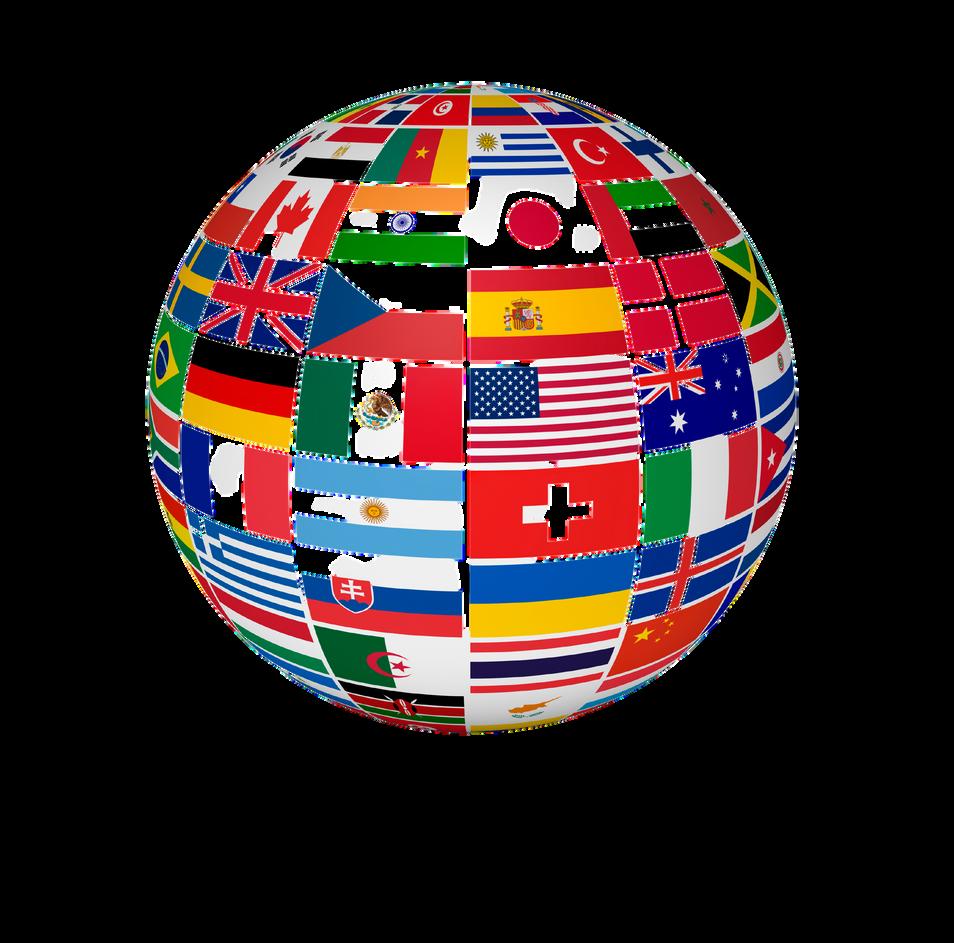
The Multicultural Club has been taking place all year with many new languages showcased. All students are welcome and this club focuses on the cultural and linguistic diversity of all members of our school community. We are looking forward to seeing you all in Multicultural Club. We are always open to new members and suggestions
The Language Corner
Meet our multicultural prefects
WeareveryluckytohavethreeamazingnewmulticulturalprefectsinColáiste Bríde.Here,MariamandNinotellusabouttheirrole.
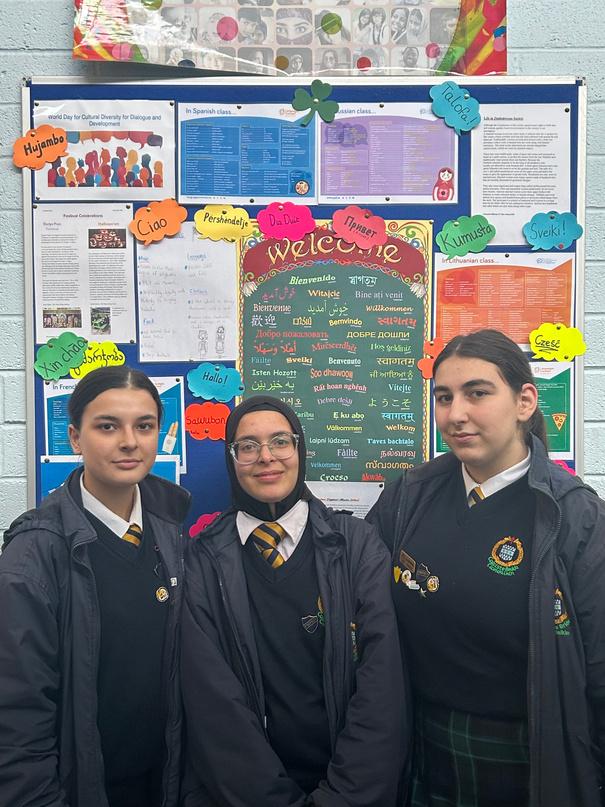
I have decided to apply for Multicultural prefects position as I want to promote diversity and understanding within the Coláiste Bríde community By taking on this role, my aim is to create friendly and understanding environment for all of the students of Coláiste Bríde coming from diverse backgrounds and to share their experiences, traditions, values and interests. I want to ensure that students coming from various backgrounds feel respected, recognized and represented in our school community. This is very important to me.
Mariam Samkanashvili, 5th Year, Rang Diarmaid.
Make sure to follow us @CbMulticultural
I have decided to be a multicultural prefects because I want people to understand other students’ cultures as its one of the main things that people are very connected and close to. Culture is very important to me. I’m very connected and close to my Georgian culture My goal is for students to try to connect and share other’s cultures and communities with understanding of the values and interest in traditions. So our community can understand all kinds of backgrounds and respect them in our school community Make sure to pop into T9 on Tuesdays at lunchtime to learn all about culture.
Nino Jigauri, 5th Year, Rang Diarmaid

We have lots of greetings on our multicultural noticeboard in different languages. If you would like to include your language, please call to T9 on Tuesdays at lunch time.
March 2024
The Language Corner Ż
A Celebration of Culture
This year on 28th November Colaiste Bríde celebrated the many languages and cultures in our school community. Our 5th years facilitated traditional dance workshops for out 1st Years. Also, the Active School Flag organised a traditional Lithuaniandanceworkshop.MelitaandAneleintellusabouttheirexperiences.
The Lithuanian dance workshop was not only a way to showcase our cultural heritage but also a way to bond with other members of the Lithuanian community at Coláiste Bríde. It was amazing to see how much effort and dedication everyone put into learning the dance. Through our rehearsals and practices, we have not only shown our dance skills but also built lasting friendships and a sense of community unity The day of the performance was nerve-wracking, but as soon as the music started playing and we began moving in unison, all the nervousness melted away. The energy and excitement of the audience encouraged our performance skills and seeing the joy on their faces made all the hard work worth it
Being part of the Lithuanian dance workshop was a truly great experience that I will never forget. It not only allowed me to connect with my cultural peers but also helped me grow as a person by stepping out of my comfort zone and trying something new. I am grateful for the opportunity to be a part of such an incredible experience and will always cherish the memories made during our time together
Melita Krajevskaja, 1st Year, Rang Caoilte.
Presenting to the 1st Years was brilliant All the students were paying extra attention and they were all very interested in our traditional dance. My presentation was based on Malawian culture and traditions and the students were fascinated when they heard how Malawi was saved by two thieves, I taught the students a traditional dance from Malawi Everyone participated and danced with their friends It was a great day for me to show others different ascpects of my culture and everyone that was arragh.



The Language Corner March 2024
A Focus on culture China
Chinese culture is one of the world’s oldest cultures, originating thousands of years ago. China is listed as the most ancient civilization in the world. It has over 5000 years of traditional history and the creation of many Chinese traditional festivals. The customs and traditions vary greatly between countries, provinces, cities, and towns
The Chinese zodiac is a traditional classification scheme based on the Chinese calendar that assigns an animal and its reputed attributes to each year in a repeating twelve-year cycle. Chinese zodiac sign is determined by your birth year, and it can provide insights into your personality traits and compatibility with others In traditional Chinese culture, the Chinese zodiac is very important and exists as a reflection of Chinese philosophy and culture Chinese folkways held that one’s personality is related to the attributes of their zodiac animal. In Chinese astrology the animal signs assigned by year represents how others perceive one or how one presents themselves. The twelve Chinese zodiac signs in order are the Rat, Ox, Tiger, Rabbit, Dragon, Snake, Horse, Goat, Monkey, Rooster, Dog, and Pig
Chinese clothing includes the traditional hanfu and garments of ethnic minorities, as well as modern variations of indigenous Chinese dresses. Chinese clothing has been shaped through its dynastic traditions, as well as through foreign influences
Chinese architecture is the embodiment of an architectural style that has developed over millennia in China and has influenced architecture throughout East Asia. Ancient Chinese architecture wonderfully displays the long history and deep culture of China. It varies by region, ethnicity/religion, and history period Existing examples of ancient Chinese architecture are praised for their elegant profiles and varied features, such as overhanging eaves and upturned roof corners. Chinese calligraphy is the writing of Chinese characters as an art form, combining purely visual art and interpretation of the literary meaning. This type of expression has been widely practiced in China and has been held in high esteem across East Asia The Chinese tea ceremony is a traditional ritual that symbolizes the union of two families at a Chinese wedding. It involves the bride and groom serving tea to their parents, inlaws, and other family members, and expressing respect to them.
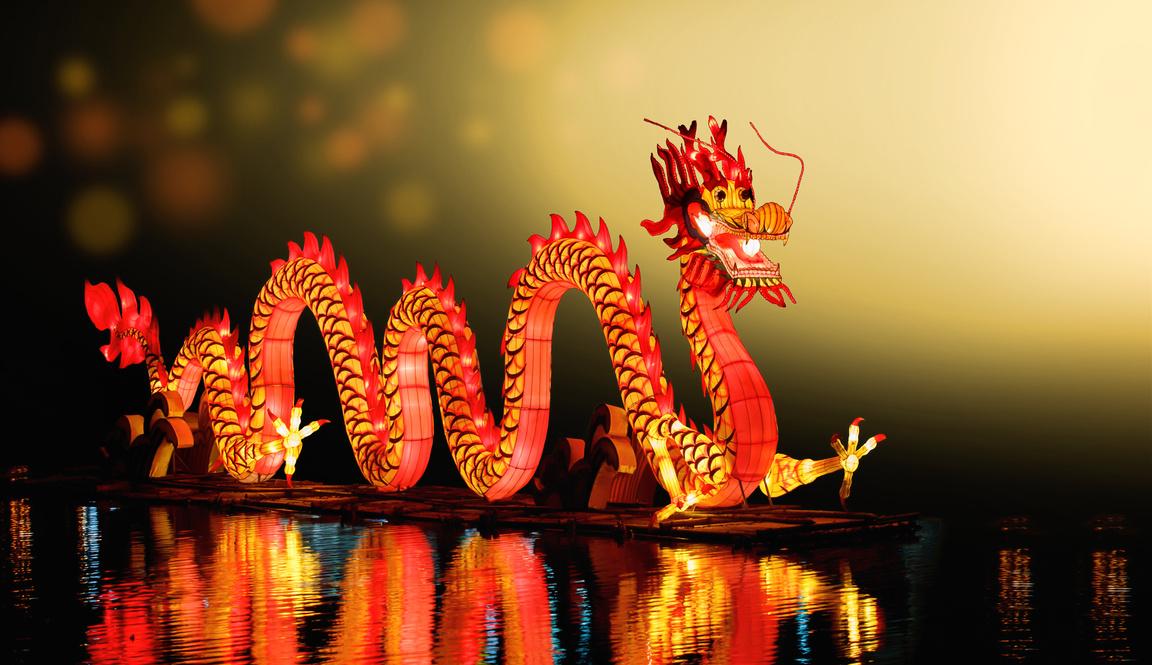
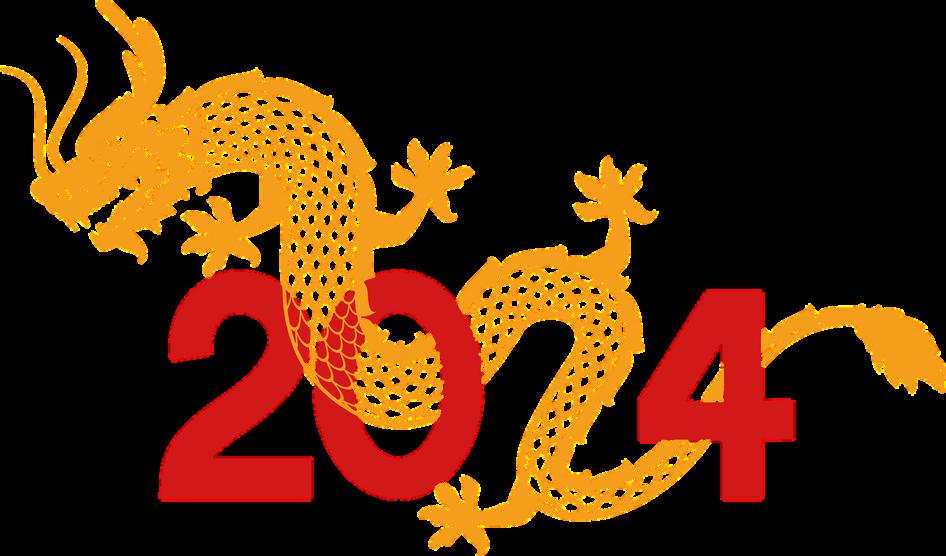
The Language Corner MArch 2024
A Focus on culture China
There are many Chinese festivals. The most important one is Chinese New Year, also known as the Spring Festival It is a significant celebration that marks the beginning of a new year on the traditional lunisolar Chinese calendar. Chinese New Year festivities typically span 15 days. The first day of Chinese New Year falls on the new moon that appears between 21 January and 20 February. Chinese New Year symbolizes the end of winter and the arrival of spring It is a time for family reunions, feasting, and honouring ancestors Key customs include lion dances, dragon dances, fireworks, and the exchange of red envelopes which contain money. Homes are adorned with chunlian couplets to bring good fortune. Chinese people traditionally believe that the year's start affects the whole year, so China's Spring Festival is a season of superstitions It's believed that what something looks like, and what its name sounds like, gives it auspicious or ill-fated significance There are many things you cannot do, such as washing your clothes or hair on New Years Day, otherwise you’ll ‘wash fortune away’. Chinese New Year is not only celebrated in China but also by Chinese communities worldwide. Other cultures have similar celebrations, collectively referred to as Lunar New Year In 2024, we welcome the Year of the Dragon People born in the Year of the Dragon are believed to be strong, energetic, and passionate. One of the most famous traditional greetings for Chinese New Year is the Cantonese “kung hei fat choi”, literally 'happiness and prosperity'. In Mandarin that is “gongxi facai”.
Vanessa Tang, 2nd Year, Rang Aoife

Hello- 你好
How are you- 你还好吗?
My name is- 我的名字是
I attend CB-- 我在CB上学
The Language Corner MArch 2024
K e y P h r a s e s i n M a n d a r i n C h i n e s e
Festival Celebrations
Orthodox Easter
Orthodox Easter is the most important festival in the Christian Calendar. In eastern Orthodox Christianity, the preparations begin with Great Lent, 40 days of reflection and fasting, which starts on Clean Monday and ends on Lazarus Saturday Wherever you live in the world, Easter is always a moveable feast day Orthodox churches in some countries base their Easter date on the Julian calendar. Easter in Georgia, as well as in the entire Christian world, is a biggest holiday. On this day, we celebrate the resurrection of Christ, the victory of life over death, renewal. It is celebrated on the Sunday after the spring equinox, the Sunday after the Jewish Passover During Passion Week, on Red Friday, all families dye their eggs red, which is a symbol of Christ's passion. The egg is dyed red on Passion Friday, symbolising the blood shed by Christ. No one eats Easter eggs until Easter. Days before Easter, they also bake Easter Paska. It embodies the belief in the Resurrection of the Saviour. Symbolically, it refers to the mountain where Christ was crucified Also, the growth of sedum in a small vessel is associated with life and renewal For Easter, grown-up jejils are decorated with red eggs. On the Easter holiday, a large number of believers meet in the church and attend the solemn liturgy, which lasts until the morning. During the week after Easter, when meeting, people congratulate each other on Easter, saying - "Christ is risen"! And they answer - "Truly"! On Easter, every family has a festive table, on which there must be Easter red eggs and Paska Children especially love the tradition of hitting each other's Easter eggs, everyone tries to choose the hardest egg to break, the one whose egg will not break when hit, the broken egg will be given to the them and they have to eat it. In Georgia, the tradition of going to the cemetery on the day after Easter is established People visit the graves of their relatives, bring Easter eggs, Paska, a little drink and food, remembering the dead and leave Easter eggs on the grave. Nevertheless, Easter is celebrated in different ways in different parts of Georgia. Many of these traditions have survived to this day. In Tbilisi and Western Georgia, pig is mostly preferred on the Easter table Khachapuri is a part of every Easter table On the Easter table, you will find fish, meat, a thousand kinds of sauces, salads, live vegetables, herbs, bread and, of course, Georgian wine. Mariam Samkanashvili, 5th Year, Rang Diarmaid.


The Language Corner MArch 2024
Festival Celebrations
Lithuanian Traditions
One of the most important traditions in Lithuania are festival celebrations. The country has a huge calendar of events that are celebrated throughout the year, each with its own unique customs and rituals One example is Uzgavenes, which is a traditional pre-Lenten festival that features parades, masked characters, and the burning of an effigy symbolizing winter
Another popular festival is Jonines, a midsummer celebration that involves bonfires, singing, and dancing.
Lithuanians also have a strong tradition of folk type of music and dance
The country's traditional music often features instruments such as the kankles, a type of zither, and the duduk, a wooden trumpet Folk dances, such as the polka and the kankliu dievo gaidele, are a fundamental part of Lithuanian culture and are often performed at festivals and other celebrations
Traditional Lithuanian food is also an important part of the country's culture Dishes such as cepelinai (potato dumplings) and kugelis (potato pudding) are popular staples in Lithuanian cuisine. Many traditional dishes are made with locally-sourced ingredients, reflecting the country's agricultural heritage.
In addition to these cultural traditions, Lithuania also has a long history of craftsmanship and folk art Traditional Lithuanian crafts such as weaving, wood carving, and pottery are still practiced in the country today. These crafts are often passed down through generations, preserving the techniques and designs of the past.
Overall, tradition plays a vital role in the cultural identity of Lithuania. By preserving and celebrating their unique customs and practices, Lithuanians are able to connect with their past and maintain a sense of community and belonging Through festivals, music, dance, cuisine, and crafts, Lithuania continues to honor its rich cultural heritage and ensure that its traditions are passed down to future generations.
Melita Krajevskaja, 1st Year, Rang Caoilte
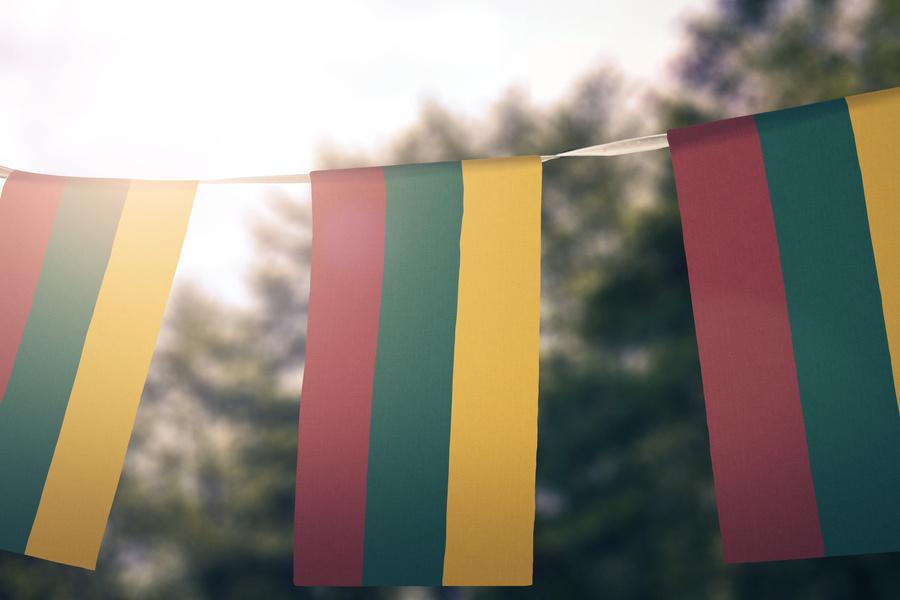

The Language Corner MArch 2024
Festival Celebrations
StBrigid'sDayisaspecialdayinColáisteBríde..Herewefindoutaboutthisspecialday andthecalendarcustomsbehindthisday.
St Brigid's Day
Coláiste Bríde - Saint Brigid’s Day
St. Brigid’s Day is a special occasion at Coláiste Bríde, and this year me and my friend had the opportunity to present a PowerPoint about St Brigid to the 2nd years The bench-ball tournament was set to take place on St Brigid’s Day, and the excitement was palpable among the 1st year groups. Each group selected ten players to compete, and the rules added an educational twist - if a player was benched, they had to share a fact about St Brigid to rejoin the game The atmosphere was electric as the groups competed, with cheers and support filling the air In the end, it was the 1st Year class Rang Ronan that emerged victorious, creating a truly memorable moment for everyone involved.
This event not only brought the students together in friendly competition but also allowed them to learn about the significance of St Brigid's Day in a fun and engaging way It was a day filled with sportsmanship, camaraderie, and a celebration of Irish culture.
Some information about Saint Brigid’s Day in Lithuanian St. Brigids diena yra diena, kai airiai švenčia šiltesnių dienų atėjima po ilgos žiemos. Tą dieną žmonės valo ir ruošia savo namus ateinančiam sezonui, kad pasveikintų ir į gyvenimą pakviestų šviežią pavasario energiją.
Tradiciniai ritualai ir daiktai kuri susiję su St Brigids Day ir gyvaivo šimtmetus. Viena iš populiariausių dalykas yra iš stulpų nupintas St. Brigids kryžius , jis yra simbolis kuri apsauga ir duodą sėkmės, kuris, tikima, atbaido piktąsias dvasias ir atneša palaiminimus buityje.

Melita Krajevskaja, 1st Year, Rang Caoilte

The Language Corner MArch 2024















